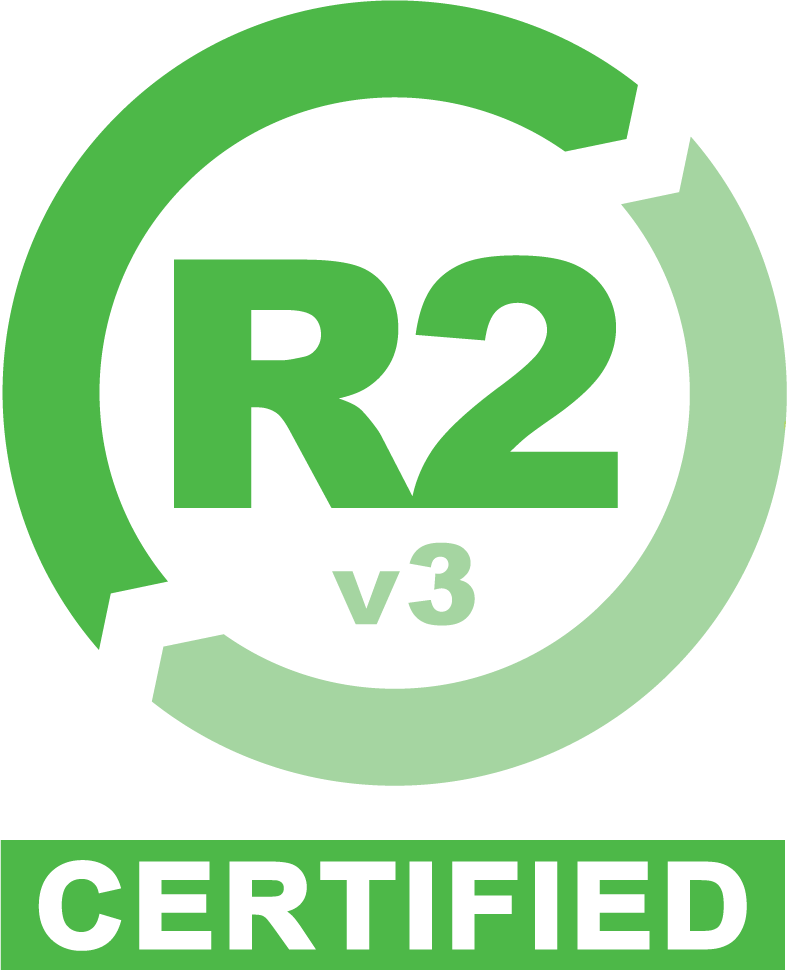Legislation and the Circular Economy are Fueling E-Recycling Trends
 1
1 Mar
The Future of E-Waste Management – Part 1
The trend toward complete internet connectivity promises consumers previously unheard of access and convenience. However, the resulting volume of e-waste being generated has already created numerous challenges to the global economy and endangers the health of our planet and our species.
According to Statista, e-waste production grew at a steady rate of 6% annually from 2010-2020, growing from 33.8-million metric tons in 2010 to over 53.6-million at the start of this decade. In addition to rapidly filling landfills, this waste is responsible for poisoning ground water, polluting the air, and creating a variety of health problems, especially in third-world countries where proper handling and disposal is almost non-existent.
This incredible volume of discarded electronics also represents the vast amount of energy consumed during the mining and processing of the materials used to create higher-tech replacements. Coupled with the electricity and fuel needed for the manufacturing, packaging, warehousing, and distribution of the assembled products, the energy cost represented by the piles of throw-away devices becomes nearly unfathomable. In addition, the thousands of tons of dwindling raw materials contained within those devices—much of it being rare earth elements—will never see the light of day again.
Opportunities for Improved E-waste Management Are Just Around the Corner
The global e-waste situation is not all bad news. Through the actions of environmental organizations and watchdog groups, the world’s lawmakers have become acutely aware of the situation. In recent years, many countries have begun working diligently on policies and legislation to rein in the amount of waste being generated and the volume of precious raw materials being lost.
Also having a positive impact on the problem are many societal forces currently sweeping the world, like the movement toward greener products and the desire for more energy-efficient transportation solutions. Other broad changes, like the advent of 5G technology, provide the added motivation necessary for businesses and individuals to make a change.
Clear and Consistent Legislation Lays the Foundation for Managing E-waste Challenges
An increasing number of countries are adopting national e-waste policies, legislation, or regulations to control both the amount of e-waste being generated as well as how it’s managed. In many regions however, regulatory advances are slow, enforcement is low, collection opportunities are scarce, and proper management is poor.
Thankfully, pressure from other countries is slowly improving the situation in these regions. In fact, the United Nations’ International Telecommunication Union (ITU) member states have set a target of raising the percentage of countries with e-waste legislation to 50 percent – or 97 countries – by 2023.
Legislation is essential for improving the global rate of proper e-waste collection and recycling. As the amount of e-waste grows toward critical mass, so too can we expect a parallel growth in legislation for its management.
The Rise of the Circular Economy will Propel Better E-waste Management
Since the turn of the century, the promise of the economic and environmental benefits of a circular economy has made it a hot topic for corporations and governments alike. Decision makers increasingly request, or even require, that all players in their supply and distribution chains are working toward a circular economy.
E-waste provides an opportunity to enhance the circular economy through discarded equipment and high-value materials. Numerous rare and costly materials, such as palladium and scandium, can be found in e-waste, as well as more common metals like iron and copper. Harvesting these raw materials can provide big benefits. According to the ITU, “a potential raw material value of $57 billion could have been extracted from the e-waste generated in 2019, particularly through iron, copper and gold.” That’s a lot of potential revenue for any companies with the foresight to pursue it.
Going forward, it will be increasingly important to reduce the use of virgin material and increase material recovery in a more sustainable way. As a result, we can expect the trend toward the adoption of a “zero waste, zero landfill” philosophy to continue. In addition, the way in which the needs of economic circularity dovetail so precisely with the needs of e-waste management promises to push the electronics recycling industry agenda forward at an even more accelerated pace.
Absolute Data Destruction will Become the Norm for Businesses and Consumers
Cybercrime is big business and it’s definitely on the rise. People are quickly learning that even a small amount of leaked data in the wrong hands can lead to a widespread interruption of essential public services, multimillion-dollar ransom demands, and even violent attacks on people or property. Surprisingly, this trend actually has a positive impact on the e-waste problem.
Due to the advent of faster, cheaper solid state drives and improved cloud storage, businesses and the general public are replacing legacy storage systems more frequently than in recent years. With the rise in data breaches resulting from improper erasure or destruction of data storage devices, companies and individuals are seeking providers who will guarantee complete data removal and/or mechanical destruction. Expect demand and availability of these services to grow in the coming years.
The Future Looks Promising for Companies Like Sadoff E-Recycling and Data Destruction
It’s an exciting time for e-recycling and data-destruction companies like ours. Despite the challenges ahead, the current trends in e-waste management and electronics recycling show that the efforts we and our customers have put forth to reduce waste, reuse electronics, and recycle valuable materials have not been in vain.
In part two of this article, we’ll look at the technological advances and evolving consumer attitudes that will continue to shape the future of electronic waste management and how e-recycling companies like ours do business. The road ahead will be challenging, but many of the solutions are right around the corner for those with the foresight to see them.
If you’d like to become part of those solutions, contact us today. We provide a variety of services to help get you and your organization on track to not only protect the environment, but also save money and prevent data breaches in the process.
Read The Future of E-Waste Management Part 2: 5G, Right to Repair, and Refurbished Electronics
Tags: data destruction, E-Recycling Regulations, sustainabilityCategorized in: Data Security, E-Recycle, Electronics Recycling, Sustainability




 Google map directions
Google map directions
 Google map directions
Google map directions
 Google map directions
Google map directions
 Google map directions
Google map directions
 Google map directions
Google map directions
 Google map directions
Google map directions
 Google map directions
Google map directions